Ivan Čuk
EDITORIAL
Luiz Henrique Duarte, Michele Viviene Carbinatto, Myrian Nunomura
ARTISTIC GYMNASTICS AND FEAR: REFLECTIONS ON ITS CAUSES
Evdoxia Kosmidou, Miltiadis Proios, Evgenia Giannitsopoulou, Theofanis Siatras, George Doganis, Michalis Proios, Helen Douda, Anna Fachantidou-Tsiligiroglou
EVALUATION OF AN INTERVENTION PROGRAM ON BODY ESTEEM, EATING ATTITUDES AND PRESSURE TO BE THIN IN RHYTHMIC GYMNASTICS ATHLETES
Yoshie Motoshima, Junichi Kitagawa, Akira Maeda
THE RELATIONSHIP BETWEEN THE MECHANICAL PARAMETERS IN THE TAKE-OFF OF A VAULT AND THE DROP JUMP ABILITY
Helmut Geiblinger, Tony Dowden
CONSIDERATIONS FOR CONTROLLED COMPETITION LANDINGS IN GYMNASTICS: AGGREGATED OPINIONS OF EXPERTS
Klaus Hübner, Christoph Schärer
RELATIONSHIP BETWEEN SWALLOW, SUPPORT SCALE AND IRON CROSS ON RINGS AND THEIR SPECIFIC PRECONDITIONING STRENGTHENING EXERCISES
Dejan Križaj, Ivan Čuk
CAN MINIATURE ACCELEROMETERS ATTACHED TO THE GYMNASTICS SPRINGBOARD BE USED FOR TAKE-OFF ANALYSIS?
Catarina Leandro, Lurdes Ávila-Carvalho, Elena Sierra-Palmeiro, Marta Bobo
ACCURACY IN JUDGMENT THE DIFFICULTY SCORE IN ELITE RHYTHMIC GYMNASTICS INDIVIDUAL ROUTINES
Moriatsu Nakasone
ELEMENTS DEVELOPMENT ON HORIZONTAL BAR IN MEN’S ARTISTIC GYMNASTICS IN JAPAN LITERATURE
Anton Gajdoš
SHORT HISTORICAL NOTES IV
Maria Raquel Goncalves e Silva, Teresa Paiva and Istvan Karacsony, Ivan Čuk
NEW BOOKS
SUPLEMENT - DODATEK
International Scientific Conference: Sport, Health & Education – Complementary Approach to Gymnastics
Ivan Čuk
EDITORIAL
Dear friends,
For our last issue in 2015 we prepared the largest volume ever. It has more than 150 pages of gymnastics-related scientific readings. In his issue you will find eight new articles, Anton Gajdoš’s Historical Notes, a supplement dedicated to the International Scientific Conference: Sport, Health & Education – Complementary Approach to Gymnastics, and information about the latest books.
Since our last issue, SCOPUS has published journal evaluations for 2014 and upgraded our ranking. We wish to thank our authors and researchers from around the world who are sharing their work and knowledge through our journal or spreading our journal knowledge in other journals. From our editorial board member Marco Antonio Bortoleto we received information that the Brazilian Agency of Scientific Journals Classification categorised the Science of Gymnastics Journal as B1 (on a scale A1, A2, B1, B2, ... B5, C). It is a very good ranking for this type of publication. We also applied for a similar status in Poland and we intend to apply to be included in the Ulrich's Data Base. If we wish to become members of PUBMED data base we will need to publish at least 50 articles per year. At the moment this seems a very ambitious plan.
Our first article comes from Brazil: authors Luiz Henrique Duarte, Myrian Nunomura and Michele Viviene Carbinato explored the different types of fear in artistic gymnastics. The second article is by Evdoxia Kosmidou, Miltiadis Proios, Evgenia Giannitsopoulou, Theofanis Siatras, George Doganis, Michalis Proios, Helen Douda and Anna Fachantidou-Tsiligiroglou: they evaluated body self-esteem in rhythmic gymnasts. The third article is from Japanese researchers Yoshie Motoshima, Junichi Kitagawa and Akira Maeda who compared laboratory tested drop jump in relation to the take off in vivo on vault. Helmut Geiblinger and Tony Dowden from Australia conducted an interesting research study on coaches and how they evaluate proper landing. Klaus Hübner and Christoph Schärer from Switzerland looked at strength training tests for swallow, support scale and iron cross. Dejan Križaj and Ivan Čuk from Slovenia continued with their evaluation of accelerometer Skoci as used in the field and the laboratory. Experts on rythmic gymnastics from Portugal and Spain Catarina Leandro, Lurdes Ávila-Carvalho, Elena Sierra-Palmeiro and Marta Bobo evaluated rhythmic gymnastics judges' efficiency in evaluating difficulties. The last article is from Japanese historian Moriatsu Nakasone who provides an overveiw of the development of high bar elements as presented in Japanese literature.
Anton Gajdoš in Short Historical Notes IV prepared a memo about the team representing Finland in 1948, including Akimoto Kaneko and Helena Rakoczy. In our supplement on the International Scientific Conference: Sport, Health & Education – Complementary Approach to Gymnastics, held at Gdansk University of Physical Education and Sport in Poland between18 and 20 June 2015, you can find lectures and abstracts from the symposium. Please note that this journal would be happy to promote science in gymnastics for other events worldwide as well.
Finally, there is a brief overview of the latest publications: Portuguese authors Maria Raquel Goncalves e Silva and Teresa Paiva contributed two books about nutrition and rest, while Istvan Karacsony and Ivan Čuk published a book on the Horizontal bar.
Just to remind you, if you quote the Journal: its abbreviation on the Web of Knowledge is SCI GYMNASTICS J.
I wish you pleasant reading and a lot of inspiration for new research projects and articles,
Luiz Henrique Duarte, Michele Viviene Carbinatto, Myrian Nunomura
ARTISTIC GYMNASTICS AND FEAR: REFLECTIONS ON ITS CAUSES
In the field of sports psychology it is nearly unanimous that both positive and negative emotions directly affect sports performance. In the case of artistic gymnastics (AG), it is not uncommon for athletes to face one specific, characteristic emotion: fear. In this study, we will conduct an analysis of fear felt by gymnasts in training in order to detect subjective perceptions about the causes of fear and the strategies utilized to control it. Sixteen gymnasts who compete in the pre-infantil (9 – 10 years) category of the Sao Paulo State Championship were interviewed. Content analysis was selected as the methodological technique for data. We detected four units of registry for analyzing the causes of fear: fear of injury, fear of error, fear of apparatus and fear of coach. Regarding strategies for controlling fear, we detected seven units: social support (friends and family), instructional support, attention and concentration, positive thinking and self-confidence, mental practice, and relaxation techniques. In general, coaches can interfere as much in the manifestation of fear as in its control. Among possible pedagogical strategies, we can highlight adjustments to the training environment and instructional procedures that facilitate the teaching-learning process, particularly in regards to the athletes’ feelings of security.
Keywords: gymnasts, sport, competition, emotion, psychological approach, qualitative research.
Evdoxia Kosmidou, Miltiadis Proios, Evgenia Giannitsopoulou, Theofanis Siatras, George Doganis, Michalis Proios, Helen Douda, Anna Fachantidou-Tsiligiroglou
EVALUATION OF AN INTERVENTION PROGRAM ON BODY ESTEEM, EATING ATTITUDES AND PRESSURE TO BE THIN IN RHYTHMIC GYMNASTICS ATHLETES
The aim of the present study was to evaluate the outcomes following a 3-months intervention program addressed toward body esteem, eating attitudes and pressure to be thin by others in Greek rhythmic gymnastics athletes. In the program participated 49 athletes (29 in the intervention group and 20 in the control group). Both groups completed self reported questionnaires at baseline and after the intervention. From the results it was shown that after the intervention participants in intervention group increased body esteem, decreased eating attitudes (in general, diet, boulimia and preoccupation) and pressure to be thin by experts and parents. On the other hand, participants in control group decreased body esteem and self-esteem of body image, while they increased eating attitudes (general, and diet scale) and perceived pressure to be thin by coaches and experts. The program was assessed by participants in intervention group as very relevant to rhythmic gymnastics, high in believability and high in promoting emotions. The source of the intervention was evaluated as informed, persuasive and reliable. This is the first controlled intervention applied to rhythmic gymnastics athletes in Greece and elements for future initiatives are identified and discussed.
Keywords: rhythmic gymnastics, intervention, body esteem, eating attitudes, pressure to be thin.
Yoshie Motoshima, Junichi Kitagawa, Akira Maeda
THE RELATIONSHIP BETWEEN THE MECHANICAL PARAMETERS IN THE TAKE-OFF OF A VAULT AND THE DROP JUMP ABILITY
In the vault in gymnastics, the take-off motion is important to the success of the vault and to perform more difficult vaults. Vaulting ability has been studied by motion analysis, but this method is not effective for easy evaluation. Therefore, the purpose of this study was to investigate the relationship between the mechanical
parameters in the take-off of a vault and the drop jump ability, by focusing on the rebound drop jump index RDJ index) calculated from the two variables of contact time and flight time. Male gymnasts performed the Kasamatsu vault, and their vaulting motion was captured using the 3-dimensional optical motion capture system MAC3D. In addition, they performed a drop jump from a height of 0.4 m without arm swing under two conditions (vault board and non-spring floor), and the RDJ index was calculated. As a result of calculating the regression equation for estimating the vertical impulse of the Kasamatsu vault by using the RDJ index of the drop jump, a significant regression equation was obtained in the RDJ index of the drop jump on the vault board (y = 0.290x + 5.368, p < 0.05). This result suggests the possibility that the vertical impulse of the take-off on the vault board can be evaluated by measurement under conditions whose characteristics are similar to those of actual vaulting, such as a drop jump on a vault board, in high-level gymnasts.
Keywords: vault, vertical impulse, drop jump, RDJ index.
Helmut Geiblinger, Tony Dowden
CONSIDERATIONS FOR CONTROLLED COMPETITION LANDINGS IN GYMNASTICS: AGGREGATED OPINIONS OF EXPERTS
Dismounts from apparatus containing multiple rotations, performed by elite gymnasts during competition, require great courage and virtuoso displays of precisely organized movements and skills. The dismount and landing leave the final impression in a routine and are often the key to a successful evaluation by the judges. Landings require precise body control and the skillful dissipation of substantial body momentum. The aim of this research study was to investigate landing techniques and strategies used by elite male ymnasts through the eyes of gymnastics experts. It drew from the accrued knowledge and experience of 21 male expert participants who were elite coaches, elite gymnasts, international judges or combinations of these. The experts made a number of subtle points, many of which are not in the extant literature. The experts highlighted concerns about safety and the study concluded that on-going monitoring of the rules on competition landings within the Code of Points (Fédération Internationale de Gymnastique, 2015) would
be beneficial to the sport.
Keywords: controlled competition landings, landing technique, landing strategies, optimal body segment
coordination.
Klaus Hübner, Christoph Schärer
RELATIONSHIP BETWEEN SWALLOW, SUPPORT SCALE AND IRON CROSS ON RINGS AND THEIR SPECIFIC PRECONDITIONING STRENGTHENING EXERCISES
International men’s gymnastics has evolved rapidly on all six apparatus. On rings, strength elements are primarily determining. Various preconditioning strengthening exercises are performed routinely in training. However, the relationship between these exercises and the strength elements on rings, which would be of interest for coaches, are not well studied. The objective of this study was to investigate the correlation between strength in seven preconditioning exercises and performance of three important hold elements: Swallow, Support Scale and Iron Cross. Ten male gymnasts of the Swiss national team performed a 1RM test for each of the seven strength exercises and a maximum static hold of the strength elements on rings. A significant correlation was observed only between Swallow with the preconditioning exercises Swallow supine position (r: 0.71, p: 0.031) and Bench press (r: 0.71, p: 0.046); as well as between Support Scale and Swallow supine position (r: 0.69, p: 0.039). Iron Cross correlated highest with the Cross belt (r: 0.66, p: 0.051) and Bench press (r: 0.67, p: 0.069). Further, it was observed that a minimal 1RM of 73.4% body weight is needed for the exercise Swallow supine position in order to complete a hold of the element Swallow on rings. For execution of the element Support Scale, a 1RM of 67.4% body weight for the exercise Swallow supine position is needed.
Keywords:Gymnastics, 1RM, Swallow, Support Scale, Iron Cross.
Dejan Križaj, Ivan Čuk
CAN MINIATURE ACCELEROMETERS ATTACHED TO THE GYMNASTICS SPRINGBOARD BE USED FOR TAKE-OFF ANALYSIS?
An investigation of metric characteristic of a device for measuring vault characteristics during the jump on and take-off from the springboard using a miniature Micro-Electro-Mechanical (MEMS) type accelerometer(s) attached onto the springboard is presented. The measured acceleration is integrated once to obtain the velocity of the springboard during the jump and integrated twice to obtain the springboard displacement. Due to several sources of noise the measured signals were filtered using a Butterworth filter of fourth order with a cut off frequency of 250 Hz and a moving average filter. Several parameters of the jump were extracted from the filtered data such as time to maximal springboard compression, maximal positive and negative velocities and times to achieve these velocities. The obtained parameters are evaluated for their variability and reliability by comparing them to the data obtained by a reference high precision laser sensor measuring springboard displacement. The measurement technique is capable of determining several relevant parameters of the springboard usage with an accuracy of less than 5.3 % for all evaluated parameters except for maximal positive velocity for which an error up to 15.3 % has been obtained. Analysis of 43 jumps of single gymnast proved the reliability of the extracted parameters. MEMS accelerometers can thus be used for analysis of the take-off from the springboard taking into account appropriate filtering of the data is performed before extraction of some parameters that are relevant for the analysis.
Keywords: metric characteristics, reliability, variability, vault.
Catarina Leandro, Lurdes Ávila-Carvalho, Elena Sierra-Palmeiro, Marta Bobo
ACCURACY IN JUDGMENT THE DIFFICULTY SCORE IN ELITE RHYTHMIC GYMNASTICS INDIVIDUAL ROUTINES
The main goal of this study was to analyse the accuracy in judging the Difficulty score in the Rhythmic Gymnastics Kiev World Championship 2013. The accuracy was determined analysing the judges’ agreement on the evaluation of the routines difficulty elements. 1152 difficulty forms concerning 288 individual routines were analysed - 4 forms per routine, 1 per judge. To allow the comparison between gymnasts with different levels the individual routines were clustered into 3 subgroups according to their final ranking competition. Body difficulty elements were organized, according to the composition requirements stated in the RG Code of Points (FIG, 2012). Non-parametric tests - Cochran's Q and Chi-Square Tests were applied to determine whether there were significant differences between groups. As main results we can point out that in general the judges did not agree on difficulty evaluation in 40% of the elements. The level of accuracy was lower in the second part of the ranking, and in the Mastery and DER difficulty elements.
Keywods: Evaluation, accuracy, judge, rhythmic gymnastics
Moriatsu Nakasone
ELEMENTS DEVELOPMENT ON HORIZONTAL BAR IN MEN’S ARTISTIC GYMNASTICS IN JAPAN LITERATURE
More recently a total of 800 elements have been recorded in the Gymnastics Code of Points. However few of theses elements made gymnastics history. As such we wonder by whom, when or where these various elements are performed. The purpose of this study was to collate data elements on the Horizontal Bar (HB) in men’s artistic gymnastics and to suggest new elements in the future. The method of study was undertaken by bibliographic analysis. This article refers mainly to journals that were published by the Japan Gymnastic Association, and a list that was made regarding the occurrence of new elements on HB in Men’s artistic gymnastics. From the analysis, the author gatherd data regarding various elememts that were performed. For example, Swing forward and vault backward straddle to hang (Tkatchev) was performed by Tkatchev A. in the 1979 World cup. A Tkatchev stretch was performed by Liukin V. and Nishikawa D. in the 1988 Seoul Olympics. In conclusion, developments of HB elements are greatly influenced by the improvement of apparatus, rules of the era. In the near future, directions of new occurring elements on the HB may add twists to the existing elements.
Keywods: men, artistic gymnastics, history.
Anton Gajdoš
SHORT HISTORICAL NOTES IV
Whole article.pdf Finland men team 1948, Akitomo Kaneko, Helena Rakoczy
Maria Raquel Goncalves e Silva, Teresa Paiva and Istvan Karacsony, Ivan Čuk
NEW BOOKS
SUPLEMENT - DODATEK
International Scientific Conference: Sport, Health & Education – Complementary Approach to Gymnastics
In our supplement on the International Scientific Conference: Sport, Health & Education – Complementary Approach to Gymnastics, held at Gdansk University of Physical Education and Sport in Poland held between18 and 20 June 2015, you can find lectures and abstracts from the symposium.







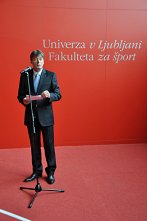

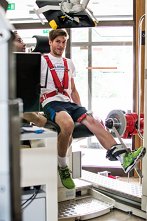


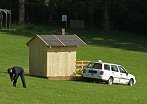


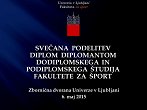







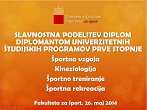

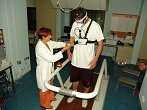



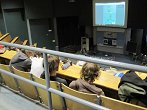




.png)